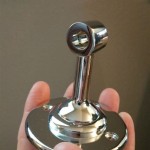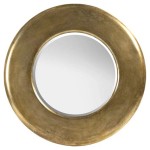Polishing Cast Iron to a Mirror Finish: A Comprehensive Guide
Cast iron, prized for its durability and heat retention, can also achieve a stunning mirror finish with proper polishing. This guide details the process, from initial preparation to achieving a high gloss, providing insights and techniques for a successful outcome.
Initial Preparation
Before embarking on the polishing process, thorough preparation is crucial. This involves removing any rust, old seasoning, or debris that may hinder the polishing process. This initial stage sets the foundation for a smooth and reflective surface.
Rust Removal
Rust removal is paramount for a successful mirror polish. Various methods can be employed, including electrolysis, chemical rust removers, or manual abrasion using sandpaper or steel wool. The chosen method will depend on the extent of the rust and available resources. Thorough rust removal is critical to prevent future corrosion and ensure a flawless finish.
Seasoning Removal
Existing seasoning must be stripped completely to achieve a mirror polish. This can be accomplished through oven cleaning cycles, lye baths, or abrasive methods. Removing the seasoning allows for uniform polishing and prevents unevenness in the final finish.
Surface Smoothing
Once rust and seasoning are removed, the cast iron surface must be smoothed. This typically involves progressively finer grits of sandpaper, starting with coarser grits to remove imperfections and gradually moving to finer grits for a smooth surface. Patience and attention to detail are vital during this stage to ensure a uniform and scratch-free surface, preparing the cast iron for polishing.
Sanding Techniques
Effective sanding techniques are essential for achieving a mirror finish. Sanding should be performed in a consistent and even manner, ensuring all areas are treated equally. Applying even pressure and using a lubricant such as water or mineral oil can prevent overheating and clogging of the sandpaper. Consistent, meticulous sanding ensures an optimal surface for subsequent polishing stages.
Polishing Compounds and Tools
Various polishing compounds are available, each designed for specific stages of the polishing process. Common choices include rouge, emery, and diamond paste. These compounds are typically applied using a polishing wheel or a soft cloth. Selecting appropriate compounds and tools is crucial for achieving the desired mirror finish.
Applying the Polishing Compound
The polishing compound should be applied sparingly to the polishing wheel or cloth. Excessive compound can lead to buildup and hinder the polishing process. The cast iron should be held firmly against the rotating wheel or buffed with the cloth in a consistent, overlapping motion. Careful application and consistent motion ensure a uniform and high-gloss finish.
Progressive Polishing
Achieving a mirror finish on cast iron requires a progressive approach. This involves starting with coarser polishing compounds and gradually moving to finer compounds. Each stage refines the surface, removing minor imperfections and enhancing the reflectivity. Progressive polishing is crucial for achieving a true mirror finish, gradually refining the surface to a high gloss.
Polishing Wheel Techniques
When using a polishing wheel, maintaining proper speed and pressure is essential. Excessive speed can generate heat, damaging the cast iron or causing the compound to dry out prematurely. Too much pressure can create unevenness in the finish. Consistent speed and pressure contribute to a smooth and uniform polish, minimizing the risk of damage and ensuring a high-quality finish.
Hand Polishing Techniques
For smaller items or intricate details, hand polishing may be more practical. This involves applying the polishing compound to a soft cloth and rubbing the cast iron in a circular motion. Hand polishing requires patience and meticulous attention to detail, particularly in hard-to-reach areas. While more time-consuming, hand polishing offers greater control and precision, especially for detailed or delicate cast iron pieces.
Maintaining the Mirror Finish
Once a mirror finish is achieved, preserving its brilliance requires proper care. The polished surface should be protected from moisture and harsh chemicals. Applying a thin layer of wax or sealant can provide additional protection and help maintain the shine. Proper maintenance is essential for preserving the mirror finish and extending its lifespan, protecting the polished surface from environmental factors and preserving its reflective qualities.

Diy Polishing Cast Iron Cookware

Should You Polish Your Cast Iron Into A Mirror Finish
A Man Gave His Cast Iron Skillet 80 Coats Of Seasoning For Science Here S What Happened
Would Polishing A Cast Iron Skillet Improve Its Non Stick Abilities Quora
A Man Gave His Cast Iron Skillet 80 Coats Of Seasoning For Science Here S What Happened

M A Mirror Polish Smooth Finishing Cast Iron Cookware

How To Polish A New Cast Iron Pan Vs Old

Sanding Down A Cast Iron Pan For That Smooth As Glass Finish Awesome Results The Prepared

Should You Polish Your Cast Iron Into A Mirror Finish

Sanding And Polishing Cast Iron Skillet Cookware 16 Steps With Pictures Instructables








